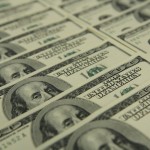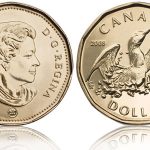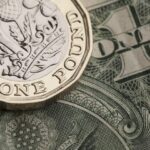Gold fell for a seventh consecutive session on Friday as the US dollar remained near the highest since early June, while bearish sentiment was further reinforced by the increased likeliness of a US interest rate hike this year.
Gold for delivery in August traded 0.09% lower at $1 142.9 an ounce at 11:37 GMT, shifting in a daily range between $1 144.5 and $1 141.7. The precious metal slid 0.3% on Thursday to $1 143.9 an ounce, having earlier fallen to $1 140.6, the lowest since November 7th, 2014. Prices are down 1.3% for the week so far, following three straight weekly drops.
The yellow metal fell through the entire week, pressured by a strong dollar that drew support by upbeat US economic data and increased bets for an increase in borrowing costs by the Federal Reserve. The precious metal also lost a key source for safe haven demand as Greece submitted on Monday to its creditors reforms requirements in exchange for a third bailout that would keep the indebted country in the euro area.
In the US, data yesterday showed that initial jobless claims fell last week more than expected, while the number of continuing jobless claims in the week before also beat projections. Reports on Wednesday had shown a faster-than-expected pick-up in US producer prices in June, while industrial production last month also came in above forecasts and factory activity in the state of New York grew more than expected in July.
Fed Chairwoman Janet Yellen reiterated in her testimony before US Congress that the Federal Reserve remains on track to lift borrowing costs this year for the first time in nearly a decade. Her comments were in line with the FOMCs most recent policy statement and a speech she held last Friday when she underscored a continued weakness in the US labor market but also expressed confidence that the US economy will continue to grow steadily in 2015, helping improve labor conditions.
Investors tend to turn bearish on gold at times of economic growth and rising interest rates as the precious metal yields returns only through price gains, while other instruments that pay interest, such as bonds, tend to become more attractive.
The US dollar index, which gauges the greenbacks strength against a basket of major currencies led by the euro, was little changed for the day and hovered near Thursdays 1-1/2-month high. The September contract stood at 97.730 at 11:37 GMT, down 0.08%, having shifted in a daily range of 97.820 – 97.540. The US currency gauge rose 0.5% yesterday to 97.806, having earlier touched 97.915, the highest since June 2nd.
Assets in the SPDR Gold Trust, the biggest bullion-backed ETF, dropped by 1.19 tons to 707.88 tons on Thursday, remaining close to June 15th’s nearly seven-year low of 701.9 tons.
Pivot points
According to Binary Tribune’s daily analysis, August gold’s central pivot point on the Comex stands at $1 144.2. If the contract breaks its first resistance level at $1 147.9, next barrier will be at $1 151.8. In case the second key resistance is broken, the precious metal may attempt to advance to $1 155.5.
If the contract manages to breach the S1 level at $1 140.3, it will next see support at $1 136.6. With this second key support broken, movement to the downside may extend to $1 132.7.
In weekly terms, the central pivot point is at $1 159.4. The three key resistance levels are as follows: R1 – $1 172.9, R2 – $1 187.9, R3 – $1 201.4. The three key support levels are: S1 – $1 144.4, S2 – $1 130.9, S3 – $1 115.9.





